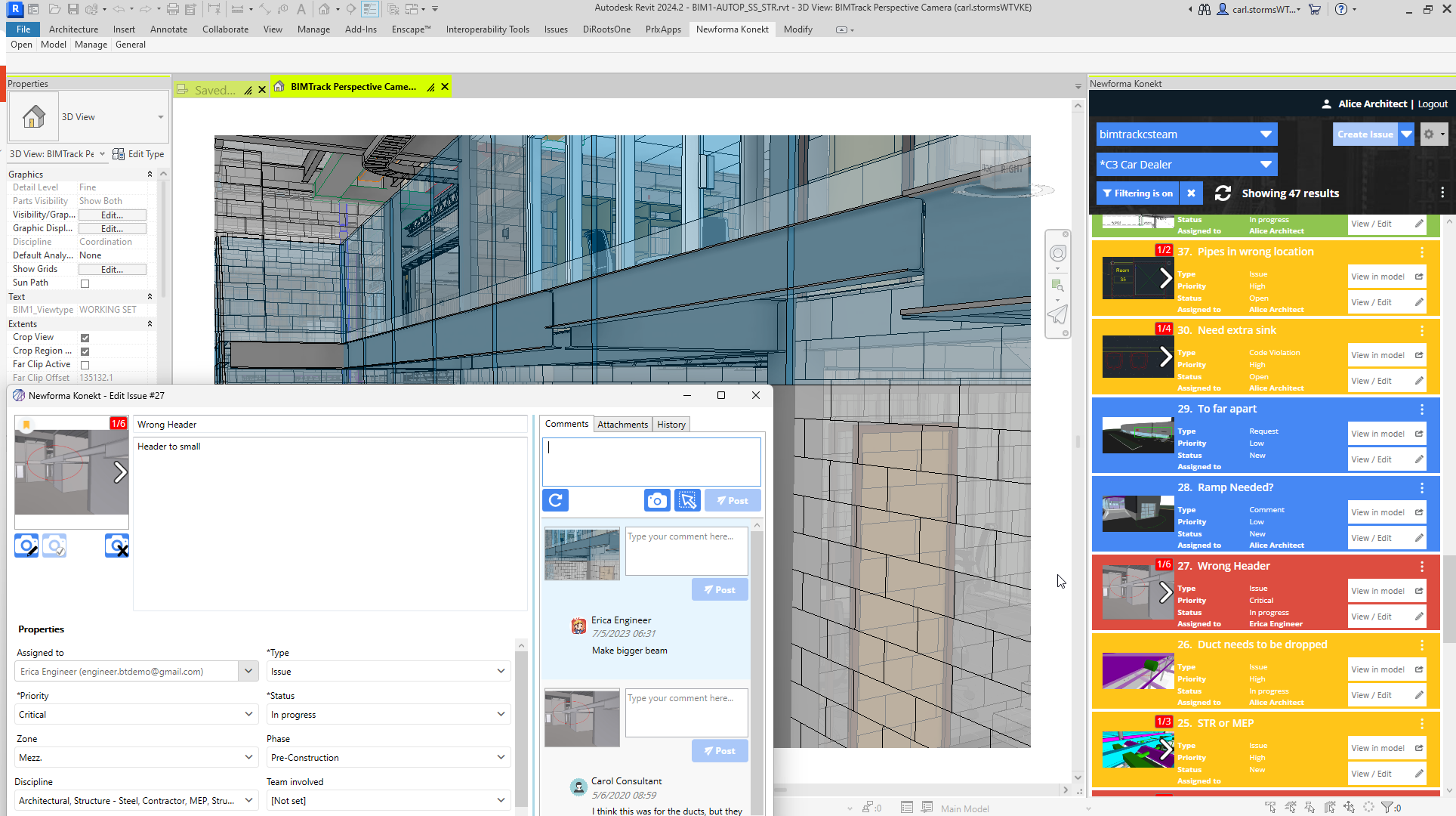Vous devez activer les cookies pour accéder à ce site.
Building Information Modeling is revolutionizing the construction industry by enhancing collaboration, boosting efficiency, and lowering costs. As projects become more complex, effective BIM coordination is critical to achieving successful outcomes. By integrating diverse design and construction data, BIM allows project teams to visualize, plan, and execute projects with greater precision. However, its true value is realized when it is effectively coordinated, aligning all stakeholders towards a shared objective.
Implementing the right strategies for BIM coordination can significantly impact project success. Whether you are an architect, engineer, or project manager, leveraging BIM for improved collaboration and communication is essential. From unifying IFC models to managing internal issues, these strategies will help you maximize the benefits of Building Information Modeling.
Learn how to enhance interoperability, manage issues effectively, and streamline workflows through the efficient use of BIM.
Unifying IFC Models for Enhanced BIM Coordination

Unifying IFC (Industry Foundation Classes) project models is essential for achieving seamless BIM coordination. By consolidating multiple models into a single, cohesive dataset, teams can work more effectively, minimize errors, and reduce clashes. This approach ensures that all team members access the most accurate and current information, leading to smoother workflows and fewer instances of rework.
Effective unification of IFC models can be achieved through advanced tools that enable synchronization and collaboration across platforms. Integrating these tools into your BIM processes helps reduce data silos, streamline communication, and keep all stakeholders aligned. This not only saves time but also significantly lowers the risk of errors and project delays.
Learn more about expediting BIM coordination by unifying IFC project models.
Leveraging OpenBIM for Enhanced Interoperability

Interoperability is a major challenge in BIM coordination. Since construction projects involve multiple software platforms, ensuring all tools work together seamlessly is crucial. OpenBIM principles foster interoperability by using open standards and protocols, enabling various software solutions to communicate effectively.
Adopting OpenBIM practices facilitates better data exchange, minimizes information loss, and enhances overall project transparency. This strategy allows teams to collaborate efficiently, regardless of the tools they use, improving project delivery and reducing risk.
Discover how OpenBIM and interoperability can transform your coordination. Maximize data exchange and boost coordination across project teams.
Improving Issue Management For BIM Success

Effective issue management is key to maintaining strong BIM coordination throughout a project’s lifecycle. From clash detection to design discrepancies, managing these issues proactively prevents them from escalating into significant problems. Using dedicated issue management tools allows teams to track, communicate, and resolve issues efficiently.
These tools also promote better communication and collaboration between teams, creating a culture of transparency and accountability. By implementing structured issue management processes, you can enhance project quality, reduce delays, and control costs.
Explore strategies for conquering BIM issue management. Learn how efficient communication and clash resolution can improve your project outcomes.
Optimizing Internal Issue Management For Better BIM Coordination

Internal issue management is crucial for effective Building Information Modeling coordination. Addressing issues early within the team helps prevent them from escalating into larger problems that could affect the entire project. Tools that facilitate internal issue tracking and management allow teams to resolve conflicts quickly, maintain quality control, and keep projects on schedule.
Adopting a proactive approach to internal issue management enhances BIM coordination by encouraging teams to identify and resolve issues at their source. This results in smoother workflows and more successful project outcomes.
Find out why internal issue management is a must-have for BIM.
Embracing the Future Of BIM and Project Information Management

As the construction industry continues to evolve, the role of Building Information Modeling in project information management becomes increasingly important. Leveraging BIM for managing data, documents, and workflows can revolutionize team collaboration and decision-making. The future lies in its ability to seamlessly integrate with other project management tools, creating a unified platform for all project information.
Focusing on data-driven decisions and collaborative workflows allows you to harness it’s full potential. This strategy not only enhances coordination but also improves project results by minimizing risks and increasing efficiency.
Read about the future of BIM and project information management. Stay ahead of industry trends and ensure your projects are set up for success.
Case Study: How HMFH Architects Streamlined Their BIM Coordination

As BIM coordination tools evolve, they offer architects more streamlined workflows and improved collaboration. Teams can manage issues, track tasks, and enhance communication seamlessly across project phases. Integrating BIM with other project systems reduces delays and keeps all stakeholders aligned, resulting in better project outcomes.
Read more about how HMFH Architects improved their BIM coordination.